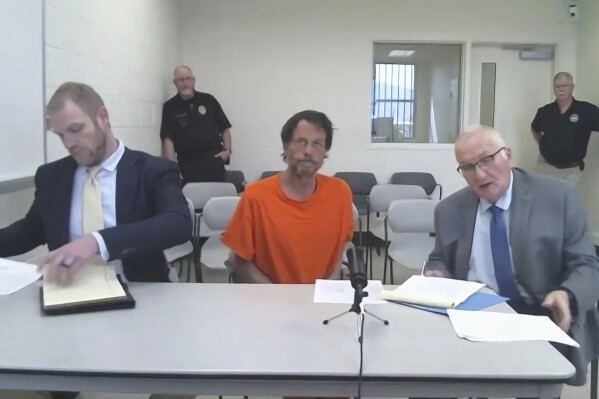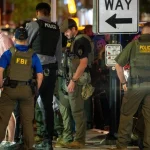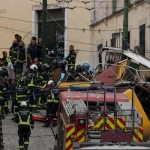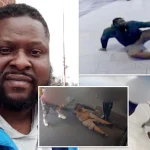In small towns across America, local bars often serve as community gathering points—places where neighbors meet, friends unwind, and strangers become acquaintances. But sometimes, a night meant for laughter and music can descend into tragedy, leaving lasting scars on families and reshaping communities forever. This is precisely the case in Montana, where a fatal bar shooting shook the town to its core and raised questions about safety, responsibility, and justice. Recently, a Montana man pleaded not guilty to a set of new charges filed against him in connection with the fatal shooting, sparking intense media coverage and community debate.
- The Incident: A Night That Changed Everything
- The Defendant: A Life Now Defined by Accusation
- The New Charges: What Has Changed
- Community Reaction: Grief, Anger, and Division
- The Legal Battle Ahead
- Broader Implications: Gun Violence in Small-Town America
- Media Coverage and Public Scrutiny
- The Victim’s Family: Seeking Justice Amid Grief
- The Defense Perspective
- Looking Ahead: What Comes Next
- FAQs
- What charges is the Montana man currently facing in the fatal bar shooting?
- Why did the defendant plead not guilty to the charges?
- How has the community responded to the bar shooting?
- What are the next steps in the legal process?
- What broader issues does this case highlight?
- Conclusion
The case has drawn attention not only for its heartbreaking details but also for what it represents: a wider conversation about gun violence, accountability, and the pressures facing small-town law enforcement and legal systems. As the trial progresses, it has become a story of legal maneuvering, community resilience, and the painful process of seeking closure after a devastating loss. This article will explore the incident, the legal proceedings, the reactions from the community, and the broader implications that extend beyond Montana.
The Incident: A Night That Changed Everything
The shooting unfolded late at night in a local bar, where witnesses described a mix of celebration and tension just before the violence erupted. Bars in rural Montana often double as both entertainment hubs and cultural gathering places, making the incident even more shocking for a community where everyone tends to know each other. According to reports, an argument escalated quickly, leading to gunfire that left one man dead and others traumatized.
Authorities arrived at the scene within minutes, securing the bar and questioning patrons. For many witnesses, the chaos and horror of that night remain vivid. “We were just enjoying ourselves, and then suddenly everything turned into panic,” one patron recalled. “People were screaming, ducking for cover. It didn’t feel real.”
The victim, a well-known figure in the community, was remembered as a hardworking individual with deep ties to friends and family. His death left a void in the community that words could not easily fill. In the days that followed, the bar remained closed, serving as both a crime scene and a symbol of the fragility of safety in even the most familiar places.
The Defendant: A Life Now Defined by Accusation
The man accused of the shooting quickly became a central figure in the story. Identified by authorities and taken into custody, he faced initial charges that later expanded as investigators uncovered new evidence. His background is being scrutinized, with prosecutors attempting to paint a picture of reckless behavior, while defense attorneys argue he acted in a moment clouded by emotion and confusion.
At his most recent court appearance, the defendant pleaded not guilty to the updated charges, a move that set the stage for what could be a lengthy and complex trial. His lawyers emphasized the principle of due process, reminding the public that every accused person has the right to defend themselves against allegations until proven guilty beyond a reasonable doubt.
This stance has created a stark divide: on one side, community members who want swift justice for the victim; on the other, those cautious about rushing to judgment before all evidence is presented.
The New Charges: What Has Changed
Initially, the case centered around a single count of deliberate homicide, but new charges have been added as investigators pieced together the events of that night. These include counts related to reckless endangerment, unlawful possession of a firearm, and aggravated assault on individuals who were endangered during the shooting.
Legal experts explain that prosecutors often expand charges to cover all possible angles, ensuring that even if the jury does not convict on the most serious charge, there are other avenues for accountability. “In cases like this, prosecutors want to give jurors options,” said one Montana legal analyst. “It’s not uncommon to see a mix of charges ranging from homicide to related offenses, especially when multiple people were at risk.”
The inclusion of new charges also highlights the painstaking work of law enforcement, who must reconstruct the scene, interview witnesses, and analyze forensic evidence to create a comprehensive picture of what occurred. Every new piece of information reshapes the legal strategy on both sides.
Community Reaction: Grief, Anger, and Division
The shooting has left deep emotional wounds in the Montana town. Vigils were held to honor the victim, with community members lighting candles, sharing memories, and demanding justice. Yet alongside grief is anger, directed both at the accused and at a culture of violence that has touched even the quietest corners of the state.
For many residents, the tragedy has sparked conversations about bar safety, alcohol-related disputes, and the role of firearms in public settings. “Montana is a place where gun ownership is part of the culture,” one local pastor explained. “But incidents like this force us to ask tough questions about responsibility, restraint, and how quickly things can go wrong.”
However, the community is not entirely united. Some argue that the accused deserves empathy, pointing to the pressures of mental health and substance abuse as factors that should be considered. Others, particularly the victim’s family, reject such arguments, insisting that nothing can justify the taking of a life.
The Legal Battle Ahead
The road to trial promises to be long and contentious. Prosecutors are preparing to bring forward witness testimony, surveillance footage, and forensic analysis to prove their case. The defense, meanwhile, is expected to argue that the shooting was either accidental or occurred under circumstances that should mitigate the severity of the charges.
Jury selection will be a critical stage, as finding impartial jurors in a small community where the case has been widely discussed may prove difficult. Judges often consider moving trials to neighboring counties in such cases, but that decision has not yet been made.
The outcome of the trial will likely hinge on the credibility of eyewitnesses and the interpretation of physical evidence. Legal experts caution that despite strong emotions, cases like this are rarely straightforward. “Jurors have to navigate not only the facts but also their own feelings,” said one criminal defense attorney. “That’s why the courtroom becomes a stage for both law and human psychology.”
Broader Implications: Gun Violence in Small-Town America
While the Montana case is deeply personal for those directly involved, it also reflects a broader national issue: the persistence of gun violence in America. According to data from the Gun Violence Archive, the United States records tens of thousands of firearm-related deaths each year, ranging from homicides to suicides and accidental discharges.
Small towns are not immune. In fact, because of their tight-knit nature, shootings can feel even more devastating, rippling through families, workplaces, and schools in ways that urban communities may not always experience. The Montana bar shooting underscores how quickly conflict can escalate when firearms are present, even in places intended for relaxation and socializing.
Experts emphasize the need for better mental health support, responsible alcohol management in nightlife settings, and community dialogue about firearm safety. While Montana has strong traditions of hunting and gun ownership, tragedies like this challenge residents to balance those traditions with modern realities.
Media Coverage and Public Scrutiny
The case has also attracted significant media attention, both locally and nationally. News outlets have covered each court appearance, fueling discussions on social media platforms where opinions are sharply divided. Some argue that the attention risks prejudicing the trial, while others believe it is necessary to keep pressure on the legal system to deliver justice.
Public scrutiny can complicate legal proceedings, as attorneys may feel compelled to craft narratives that resonate not just with jurors but also with the broader public. In today’s media landscape, high-profile cases often become symbolic battles over larger social issues, making it difficult to separate the legal from the cultural.
The Victim’s Family: Seeking Justice Amid Grief
At the heart of the case lies a grieving family determined to see justice served. They have spoken publicly about their loss, describing the victim as a loving family member and hardworking community contributor. Their pain has become a rallying point for those demanding accountability.
For the family, each court appearance is both a step toward justice and a reopening of wounds. Legal experts note that the drawn-out nature of criminal trials can be especially difficult for victims’ families, who must repeatedly revisit the trauma. Yet many find strength in the hope that justice, however imperfect, can bring some measure of closure.
The Defense Perspective
While public sympathy leans heavily toward the victim’s family, the defense has an essential role to play in ensuring the accused receives a fair trial. Defense attorneys argue that the circumstances of the shooting are not as clear-cut as prosecutors claim. They point to potential mitigating factors such as intoxication, provocation, or lack of intent to kill.
These arguments may not absolve the defendant, but they could influence sentencing if a conviction occurs. In criminal law, intent is often as important as action, and the defense will likely press hard on whether the shooting meets the threshold for deliberate homicide or a lesser charge.
Looking Ahead: What Comes Next
The case is still in its early stages, with motions, hearings, and trial preparations expected to take months. For the community, this means a prolonged period of uncertainty, with emotions likely to intensify as new details emerge.
Observers anticipate that the trial will become a defining moment for the town, forcing residents to confront not only the tragedy itself but also the social issues it represents. Whether the outcome brings healing or further division remains to be seen.
FAQs
What charges is the Montana man currently facing in the fatal bar shooting?
The defendant faces multiple charges, including deliberate homicide, reckless endangerment, aggravated assault, and unlawful possession of a firearm. These charges reflect both the death of the victim and the risk posed to others during the incident.
Why did the defendant plead not guilty to the charges?
By pleading not guilty, the defendant is exercising his legal right to contest the charges. This plea allows the case to move to trial, where his attorneys can challenge the evidence and present a defense.
How has the community responded to the bar shooting?
The community has been deeply shaken, with many residents mourning the victim and demanding justice. Vigils have been held, and the case has sparked debates about gun safety, alcohol-related violence, and accountability.
What are the next steps in the legal process?
The case will proceed through pre-trial motions, hearings, and jury selection before moving to trial. Both prosecution and defense are expected to present extensive evidence and witness testimony.
What broader issues does this case highlight?
The Montana bar shooting underscores the challenges of addressing gun violence in small towns, the role of alcohol in escalating conflicts, and the need for balanced discussions about gun ownership and public safety.
Conclusion
The tragic bar shooting in Montana is more than just a courtroom drama—it is a story of loss, resilience, and the pursuit of justice in a community struggling to make sense of violence in its midst. As the defendant pleads not guilty to new charges, the legal process will unfold against a backdrop of grief and division, with every development closely watched. Beyond the legal proceedings, the case forces important questions about how communities can prevent such tragedies, support victims, and balance cherished traditions with modern realities of safety. Ultimately, while the trial will determine legal accountability, the healing of the community will depend on its ability to come together, learn from the tragedy, and honor the memory of a life cut short.











